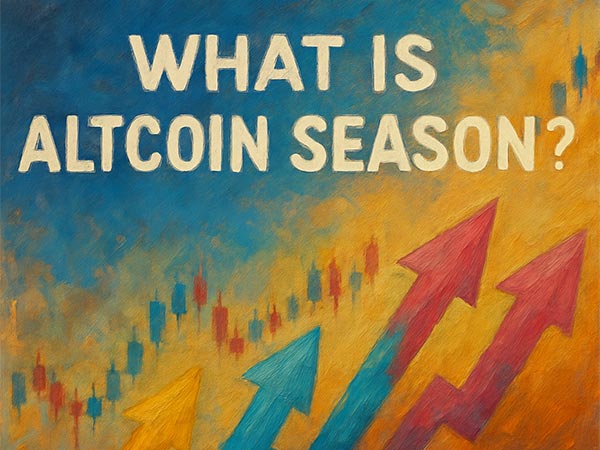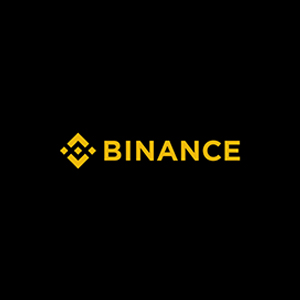What Is Altcoin Season? A Frenzy of Market Rotation

Altcoin Season refers to a special phase in the cryptocurrency market where alternative coins (Altcoins), excluding Bitcoin (BTC), collectively outperform BTC. This period is typically marked by heightened market sentiment and increased investor risk appetite, exhibiting a clear rotation effect. For instance, in Q4 of 2024, major Altcoins like ETH and SOL posted average gains of 150%, while BTC rose only about 40%. This phase usually lasts between 4 to 12 weeks and is characterized by three key features:
First is capital rotation. When BTC enters a sideways or slow growth phase, significant funds begin flowing into mid- and small-cap Altcoins in search of higher returns. Second is emotional contagion, as the narrative on social media shifts from “BTC ETF” to “the next 100x token,” fueling speculative enthusiasm. Third is increased volatility, where the top 50 Altcoins often experience daily price swings exceeding 20%. For example, in July 2025, CFX surged 17% in one day and then plunged 29.8% the next.
At its core, Altcoin Season is a product of increased risk appetite in the market, where investors move funds from the relatively stable “digital gold” BTC into high-risk, high-reward Altcoins, creating a market spectacle driven by sentiment, capital, and narrative.
What Are Altcoins? The Crypto Ecosystem Beyond BTC
Altcoins, short for “Alternative Coins,” refer to all cryptocurrencies other than Bitcoin. As blockchain technology evolves, this ecosystem has expanded far beyond simple payment functions to encompass multiple sectors, forming a massive and diverse innovation arena. Based on their primary functions and characteristics, Altcoins can be broadly categorized into five types:
-
Payment Coins (e.g., LTC): Focused on fast and low-cost transaction services.
-
Public Chains (e.g., ETH, SOL): Provide smart contract platforms supporting decentralized applications.
-
DeFi Tokens (e.g., UNI, AAVE): Build decentralized financial systems that replace traditional intermediaries.
-
Meme Coins (e.g., DOGE): Grow through community consensus and internet culture.
-
Utility Tokens (e.g., FIL): Focused on real-world use cases such as storage and computing.
As of July 2025, the total market capitalization of Altcoins has surpassed $1.8 trillion, accounting for approximately 40% of the entire crypto market—an indication of their growing influence and importance.
Why Does Altcoin Season Occur? The Logic of Capital Rotation
Altcoin Season does not occur randomly. It is a natural result of crypto market cycles and capital behavior. In the early stages of a bull market, Bitcoin is usually the first to rally, attracting institutional capital and building investor confidence. As risk appetite rises, the market enters a rotation phase. The formation of Altcoin Season can be attributed to several key factors:
-
BTC Builds Confidence: As the anchor asset, BTC breaking its all-time high (e.g., surpassing $114,000 in 2025) typically signals the start of a bull market. Once institutions enter, retail investors shift toward higher-yield Altcoins.
-
Liquidity Overflow Effect: Stimulative macro policies like Fed rate cuts push liquidity into BTC first, which then overflows into smaller, more responsive Altcoins.
-
FOMO Sentiment: When BTC seems “out of reach,” investors fear missing out and chase more volatile tokens. For example, DOGE soared 500% in a week due to a celebrity tweet, triggering retail excitement.
-
Tech Narrative Drivers: Hot narratives like Ethereum upgrades or AI-blockchain integration often spark sector-wide rallies. In 2025, the AI token ALCH surged 340% in one quarter, exemplifying this effect.
Altcoin Season Indicators: Four Core Dashboards to Watch
Accurately identifying the beginning of Altcoin Season is critical for timely positioning. The following four indicators are widely used by investors:
Bitcoin Dominance
This metric measures BTC’s market share within the total crypto market. A decline below 60% from a high point typically signals capital rotation into Altcoins. For example, in Q4 2024, BTC Dominance fell from 67% to 58%, coinciding with the start of Altcoin Season.
Altcoin Season Index
This index tracks the percentage of the top 50 Altcoins that outperformed BTC over the past 90 days. A value above 75% indicates a full-blown Altcoin Season. As of July 2025, the index stood at 16%, suggesting the season had not officially begun.
Volume Ratio
Calculated as: Altcoin total trading volume ÷ BTC trading volume. When this ratio exceeds 2.0 and sustains for over a week, it indicates the market's focus has shifted to Altcoins. During the 2023 Altcoin Season peak, this ratio reached 3.5.
Crypto Fear & Greed Index
This sentiment index is particularly useful. When it retreats from “Extreme Greed” to a “Neutral” zone, Altcoins often rally in a catch-up move. Historical data shows a 68% success rate in predicting such shifts.
Additional Indicators: Supplementary Tools for Mapping Rotation Paths
Besides the core indicators above, the following metrics help in assessing the timing and trajectory of Altcoin Season:
| Indicator Type | Tracked Metric | Practical Use |
|---|---|---|
| Stablecoin Inflows | USDT/USDC on-chain minting | Weekly increases of over $1B often signal new capital entering the market |
| Futures Funding Rate | ETH/perpetual funding | If rates turn negative (e.g., SOL at -0.1%), it suggests overheating and potential pullback |
| Social Buzz Trends | Token mentions on LunarCrush | A sudden spike (e.g., DOGE +300% mentions/day) may indicate imminent short-term surges |
| Institutional Holdings | Coinbase institutional reports | A 20% jump in holdings of a token (e.g., ADA) may signal sector ignition |
Trading Strategy: Three Stages to Capture Rotational Gains
To maximize returns and manage risk, investors can adopt different strategies for each stage of Altcoin Season:
Stage 1: Positioning Phase (BTC Dominance > 65%)
This phase calls for a cautious approach. Recommended portfolio: 60% BTC + ETH, and 40% diversified across 3–5 hot Altcoin sectors (e.g., Layer2, DePIN, AI).
Select projects with strong fundamentals—public chains with TVL over $500M (e.g., SUI) or DeFi protocols with >50% annual revenue growth (e.g., ENA).
Use a “laddered DCA” strategy: add 5% capital every 10% price drop to reduce average cost.
Stage 2: Anticipation Phase (BTC Dominance 60%–65%)
This is the pre-rotation window, ideal for accumulating quality Altcoins.
When ETH/BTC ratio strengthens on the weekly chart, it’s a good time to increase exposure to ecosystem tokens (e.g., JUP, PYTH).
Monitor catalysts like ETF applications or technical upgrades and position one month in advance. Hedge with BTC put options to mitigate Altcoin risk.
Stage 3: Exit Phase (Altcoin Season Index > 75%)
At this peak stage, begin exiting positions. Sell 20% of your holdings after every 50% gain to lock in profits.
Watch for risk signals: net weekly stablecoin outflows exceeding $3B or liquidations surpassing 0.8% of market cap. At this point, exit high-volatility tokens like meme coins.
Conservative investors may allocate 50% of profits into stablecoin yield strategies such as USDC staking (up to 8% APY).
Conclusion: The Survival Rule of Riding Market Cycles
Altcoin Season is essentially a liquidity-driven repricing of risk assets. Historical data shows that blindly chasing pumps (e.g., retail FOMO into FTT in 2024) leads to a 76% loss rate. In contrast, those who maintained a “60% BTC + 40% Altcoin” strategy achieved annual returns exceeding 34%.
The real opportunities in 2025 lie at the intersection of institutional narratives (e.g., BlackRock filing for a SOL ETF) and genuine user demand (e.g., DeFi daily volume surpassing $12B). For everyday investors, three golden rules apply:
-
Treat Altcoins as high-risk options and limit each position to no more than 5% of your total capital;
-
Use tools to set BTC Dominance triggers (e.g., build positions when CoinGlass signals <60%);
-
When social media is flooded with “To the moon” slogans, it’s time to start taking profits.
While crypto may never have a “permanent bull market,” those who understand market cycles and respect risk will always find their own seashell on the shores of Altcoin tides.
-
Sign Up

OKX
OKX is a leading global digital asset trading platform offering spot and derivatives services for cryptocurrencies.
-
Sign Up

Binance
Binance is one of the world's largest cryptocurrency exchanges, offering spot, futures, staking, and a wide range of digital asset services.
-
Sign Up

Bybit
Bybit is a global cryptocurrency exchange specializing in derivatives, spot trading, and crypto-financial products.
-
Sign Up

Gate.io
Gate.io is a leading crypto exchange offering diverse trading options, low fees, and strong security since 2013.
